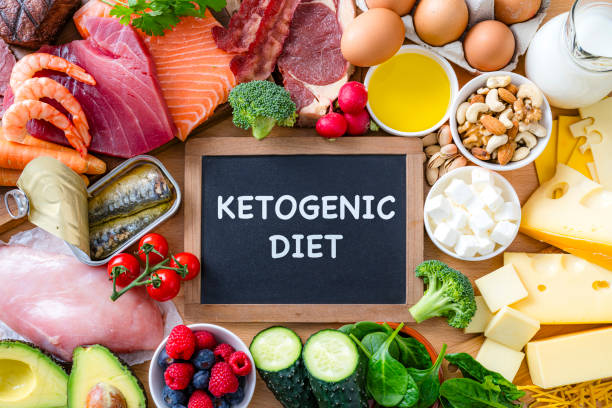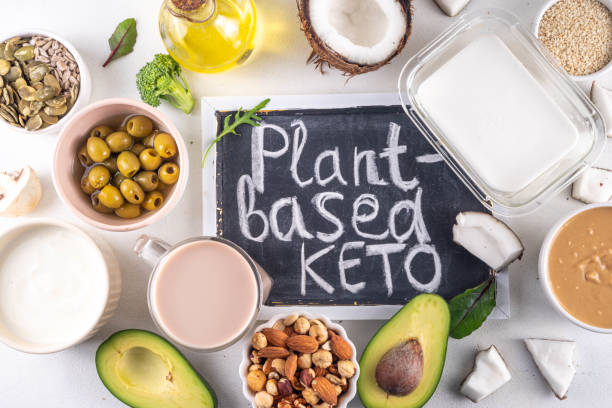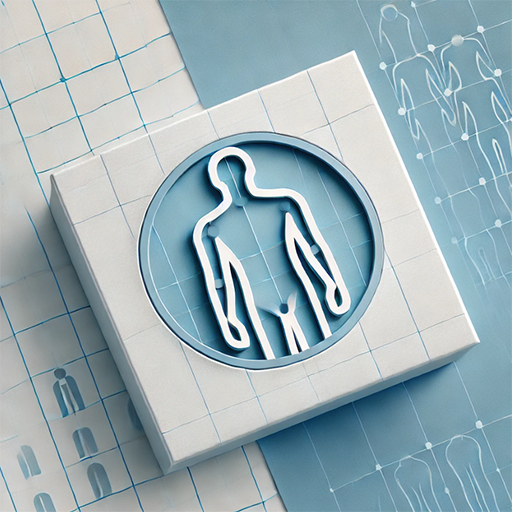Introduction
With countless diet options available, finding the right one can feel overwhelming. Whether your goal is to lose weight, boost your health, or adopt healthier eating habits, understanding the fundamentals of popular diets can make the decision easier. Each diet has unique benefits, and knowing what sets them apart can help you choose one that aligns with your lifestyle and wellness goals. This guide will explore the most well-known diets, their advantages, and key factors to consider when selecting the best fit for your needs.
1. The Mediterranean Diet
What It Is
The Mediterranean diet is based on the traditional eating patterns of countries like Greece and Italy. It emphasizes fresh, whole foods and heart-healthy fats, making it a sustainable and nutritious way to eat.
Key Features:
- Rich in fruits, vegetables, whole grains, and legumes
- Uses olive oil as the main fat source
- Includes moderate amounts of fish, poultry, and dairy
- Limits red meat, processed foods, and added sugars
Benefits:
- Supports heart health – Studies from the Harvard T.H. Chan School of Public Health suggest it helps lower heart disease risk.
- May reduce the risk of chronic diseases – Linked to a lower risk of diabetes, obesity, and certain cancers.
- Encourages long-term, sustainable eating habits – No extreme restrictions, making it easier to maintain.
- Rich in antioxidants – Helps fight inflammation, which can support overall health.
- Promotes brain health – May lower the risk of cognitive decline and conditions like Alzheimer’s.
Who Should Try It?
- Anyone looking for a balanced and flexible diet
- People wanting to improve heart health naturally
- Those who enjoy fresh, wholesome foods without strict rules

2. The Keto Diet
What It Is
The ketogenic (keto) diet is a very low-carb, high-fat eating plan that shifts your body into a state of ketosis. In this state, your body burns fat for energy instead of carbohydrates, which can lead to weight loss and other health benefits.
Key Features:
- Very low in carbohydrates – Typically limited to 50 grams or less per day
- High in healthy fats – Includes sources like avocados, nuts, seeds, and olive oil
- Moderate in protein – Focuses on lean meats, eggs, and dairy in controlled amounts
Benefits:
- Aids in rapid weight loss – Helps the body burn stored fat efficiently
- May improve blood sugar control – The American Diabetes Association suggests it could benefit people with insulin resistance
- Supports brain health – Increased ketone production may improve cognitive function
- May help reduce symptoms of metabolic syndrome – Can lower risk factors like high blood pressure and cholesterol
- Can boost energy and mental clarity – Many people report improved focus and reduced brain fog
Potential Downsides:
- Can be challenging to maintain long-term – Requires strict carbohydrate control
- May cause side effects at first – Initial fatigue and digestive issues are common
- Some experience the “keto flu” – Symptoms like headaches and nausea may occur as the body adjusts
Who Should Try It?
- People looking for rapid weight loss
- Those managing diabetes or insulin resistance
- Individuals who enjoy high-fat, low-carb foods and are comfortable with dietary restrictions
3. The Paleo Diet
What It Is
The paleo diet is based on the idea of eating like our early ancestors. It eliminates processed foods and focuses on whole, natural ingredients that would have been available during the Paleolithic era.
Key Features:
- Emphasizes whole, nutrient-dense foods – Includes lean meats, fish, vegetables, fruits, nuts, and seeds
- Eliminates grains, dairy, and processed sugars – Avoids modern processed foods
- Encourages natural, unprocessed eating – Prioritizes fresh, organic, and grass-fed options when possible
Benefits:
- May aid in weight loss and reduce inflammation – Eliminating processed foods can support overall health
- Promotes whole, nutrient-dense eating – Provides essential vitamins and minerals from fresh foods
- Can improve digestion – Avoiding processed ingredients may help reduce bloating and digestive issues
- Encourages high protein intake – Supports muscle growth and repair, making it ideal for active individuals
Potential Downsides:
- Can be restrictive and hard to maintain – Cutting out entire food groups may be challenging
- Eliminates some nutrient-rich foods – Whole grains and dairy provide important nutrients but are excluded
- May be costly – Organic produce and grass-fed meats can be expensive
Who Should Try It?
- People looking for a clean, whole-food diet free of processed ingredients
- Those sensitive to dairy or grains and seeking an alternative way of eating
- Individuals interested in a high-protein, low-carb lifestyle that supports muscle growth

4. The Plant-Based Diet
What It Is
A plant-based diet focuses on eating mostly whole, plant-derived foods while reducing or eliminating animal products. It can be fully vegetarian, vegan, or a flexible approach that includes small amounts of animal-based foods.
Key Features:
- Rich in plant-based foods – Includes fruits, vegetables, legumes, nuts, and seeds
- Can be flexible – Some versions allow small amounts of meat, dairy, or fish (flexitarian approach)
- Emphasizes minimally processed foods – Prioritizes whole, nutrient-dense ingredients
Benefits:
- Supports heart health and reduces inflammation – A diet high in plant foods can help lower cholesterol and blood pressure
- May lower the risk of chronic diseases – The National Institutes of Health suggests it can reduce the risk of diabetes and certain cancers
- Environmentally friendly and sustainable – Uses fewer natural resources than animal-based diets
- High in fiber – Promotes healthy digestion and gut health
- May improve skin health – Antioxidant-rich foods can support clear, glowing skin
Potential Downsides:
- Can be low in certain nutrients – Vitamin B12, iron, and omega-3s may require supplementation
- May require careful meal planning – Ensuring a balanced diet with enough protein and essential nutrients takes effort
Who Should Try It?
- Anyone looking to reduce meat consumption for health or ethical reasons
- Those concerned about sustainability and environmental impact
- People who enjoy plant-based meals and want to focus on whole, natural foods
5. The Intermittent Fasting Diet
What It Is
Intermittent fasting (IF) is an eating pattern that alternates between periods of eating and fasting. Instead of focusing on what you eat, it emphasizes when you eat, making it a flexible approach to nutrition.
Key Features:
- Popular methods include:
- 16/8 method – Fast for 16 hours, eat within an 8-hour window
- 5:2 method – Eat normally for five days, then reduce calorie intake for two days
- Focuses on timing rather than food restrictions – No strict rules on what to eat, just when to eat
Benefits:
- Can aid in weight loss – Helps reduce calorie intake naturally
- Supports metabolism and insulin sensitivity – May help regulate blood sugar levels
- May promote longevity – Fasting can reduce oxidative stress and inflammation
- Encourages mindful eating – Helps improve appetite awareness and portion control
- May improve gut health – Digestive system gets time to rest, promoting overall wellness
Potential Downsides:
- May cause hunger and fatigue at first – The body needs time to adjust
- Not suitable for everyone – Those with a history of eating disorders should avoid it
- Can be difficult with busy schedules – Requires planning to fit fasting windows
Who Should Try It?
- People looking for a structured eating schedule to manage weight
- Those who struggle with portion control and want to reset their eating habits
- Individuals who prefer flexibility and don’t want to restrict specific foods
6. The DASH Diet
What It Is
The DASH (Dietary Approaches to Stop Hypertension) diet is specifically designed to help lower blood pressure and promote heart health. It focuses on eating nutrient-rich foods to support overall well-being.
Key Features:
- High in fruits, vegetables, and whole grains – These provide essential vitamins, minerals, and fiber
- Limits sodium and processed foods – Reduces salt intake and avoids unhealthy additives
- Encourages lean proteins – Includes poultry, fish, beans, and legumes for healthy protein sources
Benefits:
- Proven to reduce high blood pressure – It’s one of the most effective diets for controlling hypertension
- Supports heart and kidney health – A heart-healthy diet that also benefits kidney function
- Encourages balanced, sustainable eating habits – Focuses on healthy, whole foods without extreme restrictions
- May help reduce cholesterol levels – Can lower both LDL cholesterol and triglycerides
- Promotes overall well-being – Nutrient-dense foods support your body’s vital systems
Who Should Try It?
- Those managing high blood pressure and looking for a natural way to control it
- People seeking a well-rounded, heart-healthy diet
- Individuals who prefer a balanced approach to eating without restrictive food rules

How to Choose the Right Diet for You
With so many diet options available, it can be difficult to know where to start. Here are some important factors to consider when choosing the best diet for your needs:
- Your Goals – Think about what you want to achieve. Are you aiming to lose weight, improve heart health, or manage a condition like diabetes? Your goals will help guide your decision.
- Your Lifestyle – Choose a diet that works with your daily routine and food preferences. It should be easy to follow, so you’ll stick to it long-term.
- Sustainability – The best diet is one that you can maintain over time. Look for an approach that fits your life and doesn’t feel like a temporary fix.
- Medical Considerations – Before making any major dietary changes, it’s important to consult with a doctor or dietitian, especially if you have any existing health conditions.
- Budget and Accessibility – Consider your budget and whether the diet’s foods are easily available to you. Make sure you can access fresh, healthy ingredients within your price range.
Conclusion
Choosing the right diet is a personal decision that depends on your health goals, preferences, and lifestyle. Whether you’re drawn to the flexibility of the Mediterranean diet, the fat-burning benefits of the keto diet, or the heart-healthy approach of the DASH diet, there is a plan that can work for you. The most important thing is to find a sustainable eating pattern that supports both your health and your everyday routine.
What diet have you tried or are thinking about trying? Share your experiences and thoughts in the comments below!



